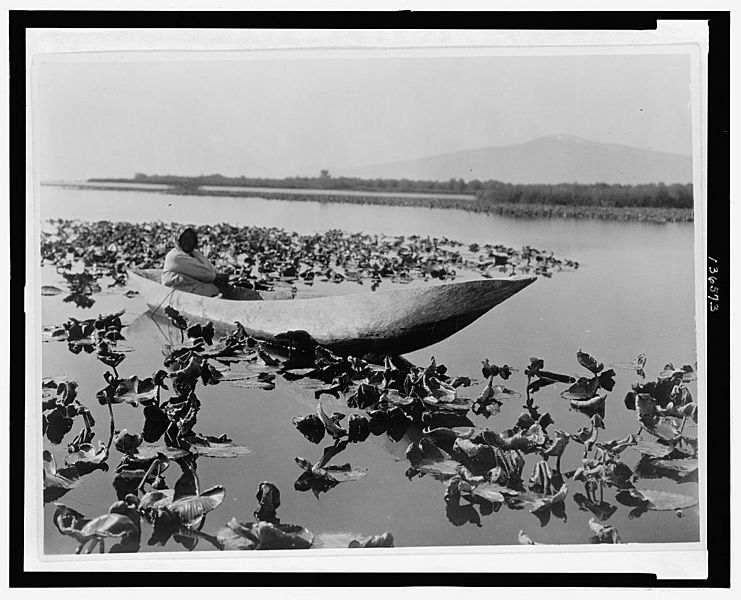Image: Edward S. Curtis Collection — The wokas season--Klamath

Description: The wókas season--Klamath. The staple article of food was the seed of the yellow water-lily, Nymphæa polysepala. It is used as a delicacy. The extensive marshes of the region are in many places covered solidly to the extent of hundreds and thousands of acres with the spreading leaves of this plants. Wókas, as the plant and the seed are called, is gathered in the latter part of August and through the whole of September. Poling a canoe through the masses of leaves and trailing stems, the harvester, always a woman, pulls the nearly ripe pods from their stems and drops them in the canoe. The mature pods, having burst open, are too sticky to be taken in the hand, and are scooped up in a tule ladle and deposited in a canoe-shaped basket. At the end of the day the contents of the basket are poured into a pit about two feet in diameter and of equal depth, and from day to day the harvest of ripe pods is added. The whole is covered with a mat. At the end of the season the contents of the pits, now by fermentation a viscous mass, is transferred to a canoe, and after the admixture of water it is thoroughly stirred so as to separate the seeds, which drop to the bottom. The gluey liquid and refuse are skimmed oli, and the seeds are drained on mats. After more thoroughly drying and partially cooking the seeds by shaking them in a tray with a few embers,‘ the woman cracks the hulls with muller and metate, and separates the kernels from the hulls in a winnowing tray, which is operated with much the same motions as a gold-miner's pan. The finished product is now ready to be thoroughly dried on mats and stored, formerly in pits, now in bags. The seeds are prepared for eating by parching them with embers in a basketry tray (the frying-pan is used at present), a process which causes them to swell and burst. It may be eaten so, a food of excellent flavor, or covered with cold water. The immature wékar pods, which constitute by far the greater part of the daily harvest, are spread on the ground to a depth of six to eight inches, and in about ten days those exposed to the sun are dry enough to be crushed on a mat with a stone pestle. after which the seeds are winnowed in a tray and stored. The pods that have not been exposed to the sun have partly decomposed, and the sticky mass is crushed where it lies and spread more thinly to facilitate drying. Later the seeds are winnowed in the usual manner- The seeds derived from immature pods are prepared for eating by patching, removing the hulls on the metate, and boiling into a mush in a cooking basket by means of heated stones. This method of cooking has of course been superseded by more modern processes, In order to avoid waiting for the sun to dry them, the pods gathered near the end of the season are roasted in a fire, crushed into a gluey mass, and dried by admixing pulverized decayed wood or ashes, after which the seeds are separated by screening and winnowing.
Title: Edward S. Curtis Collection — The wokas season--Klamath
Credit: This image is available from the United States Library of Congress's Prints and Photographs division under the digital ID cph.3c36573. This tag does not indicate the copyright status of the attached work. A normal copyright tag is still required. See Commons:Licensing for more information.
Author: Edward S. Curtis
Usage Terms: Public domain
License: Public domain
Attribution Required?: No
Image usage
The following page links to this image:

